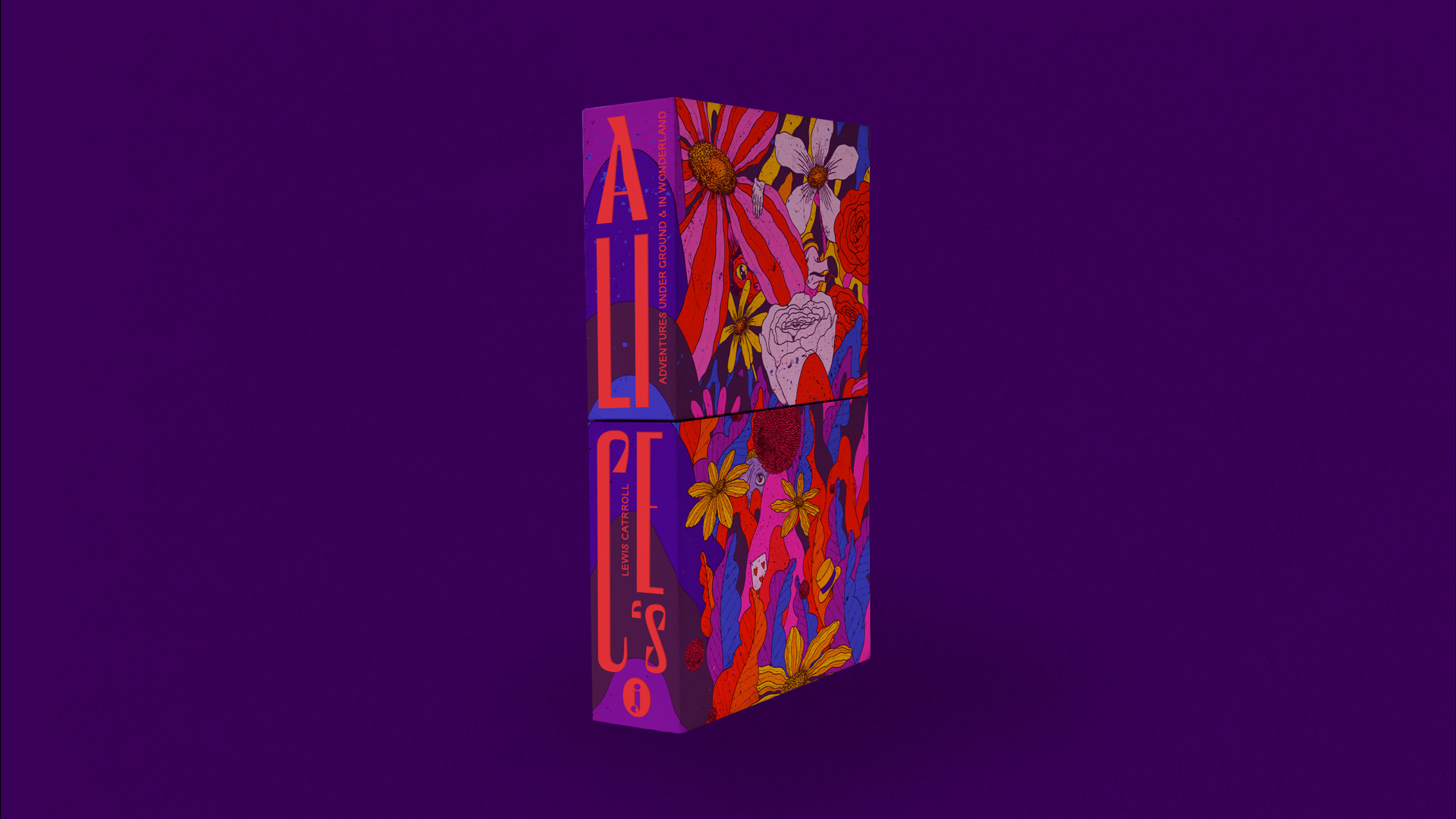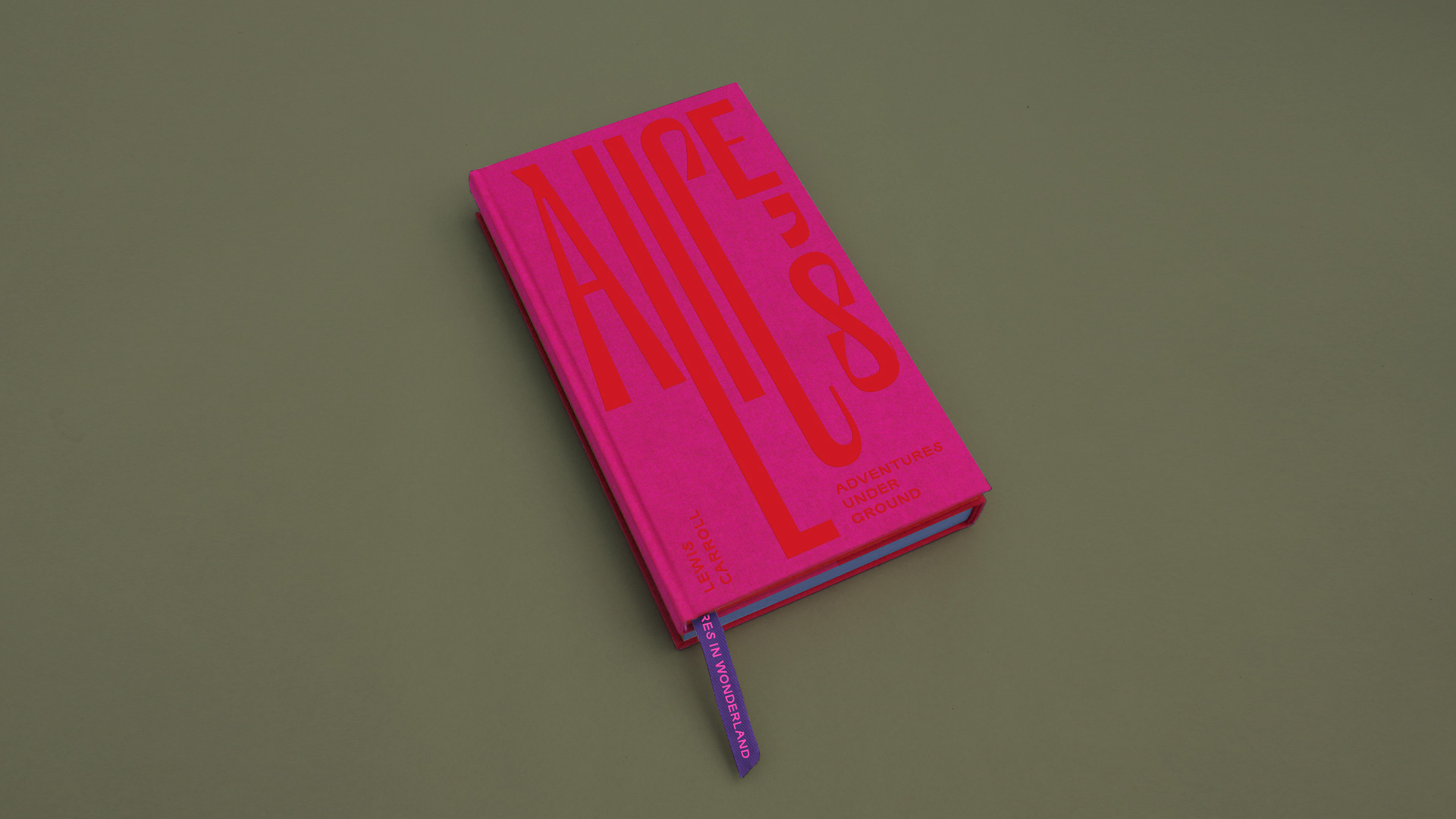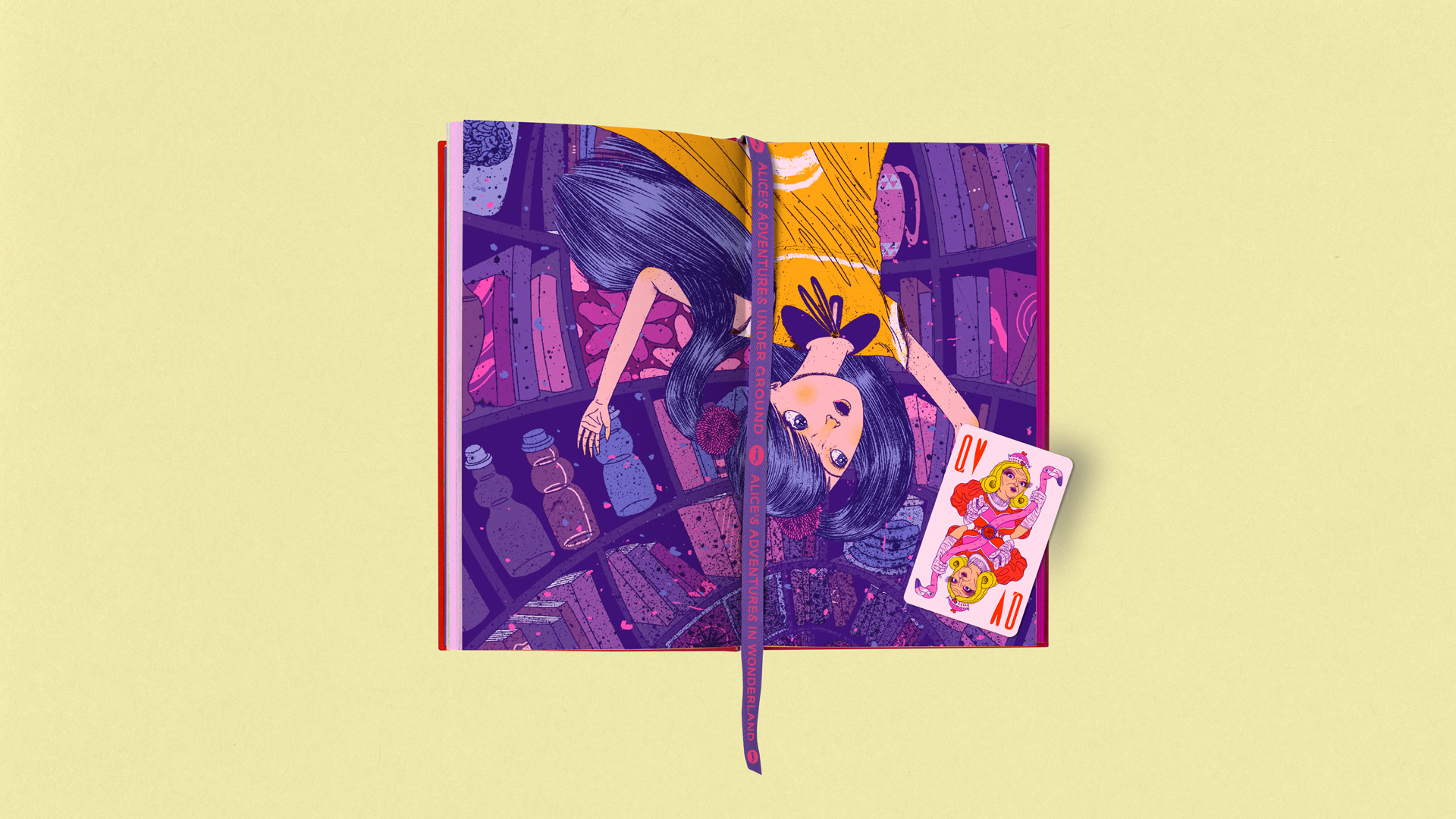






alice’s adventures in wonderland & under ground
Lewis Carroll
Illustrated By Zansky
The boat trip that changed the course of children's stories.
Alice’s Adventures in Wonderland provocatively revolutionized children’s storytelling with its whimsical narrative and imaginative world, challenging conventions and sparking creativity. Lewis Carroll’s iconic tale, filled with curious characters and fantastical adventures, continues to be one of the most cited and cherished children’s books, captivating readers of all ages with its timeless charm and provocative creativity.
collector's edition
Limited edition of 1000 hand-numbered copies.
The books were crafted through a process involving the use of four different Pantone colours for each book, totalling eight Pantones for the two editions, and printed on swedish Arctic Papers’ Arctic Volume White 130 g/m2.
The publication includes a collection of 70 original illustrations, including artwork for the box, letters and endpapers.
The two editions feature a special sewn binding, unifying them into a single volume. The hardcovers are adorned with fabric and embellished with hot stamping.
Additionally, a specially illustrated rigid case complements the set. Each volume contains four enclosed playing cards, and a meticulously designed embroidered ribbon serves as a bookmark, exclusively created for this edition.
£287
what is new and special?
Presented side by side, this cutting-edge edition features Zansky’s contemporary artwork, deliberately distancing itself from Tenniel’s Victorian-era illustrations and Disney’s interpretations.
Readers are invited to witness the gradual evolution of the story and characters as both “Alice’s Adventures Under Ground” and “Alice’s Adventures in Wonderland” unfold together.
Zansky’s use of vibrant colours introduces a contemporary psychedelia while carefully preserving the original concept of hallucinogenic mushrooms.
The meticulous graphic design, incorporating distinct colours for background and text in each chapter, enhances the overall reading experience.
In essence, this cutting-edge presentation invites readers to explore Carroll’s imaginative realm and appreciate the creative journey and variations in the author’s writing process.

- Crafted in four distinct Pantones per tome — a total of eight Pantones across two editions.
- Splendidly printed on premium paper hailing from Sweden — Arctic Volume White 130 gsm.
- A collection of 70 fresh illustrations, including 28 full-page colour images and 16 double-page spreads (inclusive of box, cards, and endpapers).
- Exquisite stitched binding uniting both editions into a singular volume.
- The sewn book block is bound to a cloth linen hardcover, elegantly sheathed in fabric, and adorned with hot stamping.
- A chic, illustrated hard case, vibrantly printed in four Pantones.
- Each volume features four bespoke playing cards (two per edition).
- An ornately embroidered bookmark ribbon, tailored specifically for this edition.
Lewis Carroll, the pen name of Charles Lutwidge Dodgson, crafted the enchanting tale of "Alice's Adventures Under Ground" during a boat trip with Alice Liddell and her sisters on the Thames River. Inspired by Alice's curiosity, he improvised a fantastical story about a girl's journey down a rabbit hole. Carroll's genuine affection for Alice, whether platonic or potentially romantic, fueled the creation of this enduring narrative. The manuscript, presented to Alice as a Christmas gift, became the precursor to the iconic "Alice's Adventures in Wonderland," marking the beginning of a literary journey that transcends generations
In 1865, Lewis Carroll, a mathematics lecturer at Oxford University, crafted the timeless English children's novel, "Alice's Adventures in Wonderland," colloquially known as Alice in Wonderland. This enchanting tale follows Alice, a young girl who tumbles down a rabbit hole into a fantastical realm inhabited by anthropomorphic creatures. Renowned for its whimsical narrative and characterized as a prime example of literary nonsense, the book is adorned with 42 wood-engraved illustrations by the talented John Tenniel.
Upon its initial release, the novel garnered praise, swiftly solidifying its status as one of the most revered works in Victorian literature. Its influence extends far and wide, shaping narratives, structures, characters, and imagery that have left an indelible mark on popular culture and literature, particularly within the fantasy genre. Credited with dismantling the didactic traditions of children's literature, the book marked the beginning of an era where writing for young readers sought to "delight or entertain." Playing with logic, the tale has secured lasting popularity among both adults and children. Notably, the central character Alice shares her name with a girl known to Carroll, Alice Liddell.
Alice's Adventures in Wonderland has transcended time, never fading from print and finding translation in hundreds of languages. Its enduring legacy includes diverse adaptations across screen, radio, art, ballet, opera, musicals, theme parks, board games, and video games. Carroll continued to weave the enchanting narrative with a 1871 sequel, "Through the Looking-Glass," and a shortened version tailored for young readers titled "The Nursery 'Alice'" in 1890.
In Lewis Carroll's "Alice in Wonderland," the exploration of the literary genre Nonsense literature is evident. The novel seamlessly showcases examples of nonsense, revealing Carroll's whimsical and immature fantasy. The nonsensical elements permeate the language, characters, plot, and logic, creating a distinct and playful narrative world.
When considering Carroll's approach to nonsense, scholars present varying perspectives on its intended effect. Some view it within a "Socratic tradition that uses nonsense to help shape a moral personal identity," while others see it as a reflection of the natural confusions and errors that children might experience. Humphrey Carpenter offers a slightly darker interpretation, describing Carroll's nonsense as an art form that rigorously pursues a simple idea to its logical, potentially nihilistic conclusion. Despite these diverse viewpoints, Carroll's genius lies in crafting a type of nonsense that captivates and amuses readers across twelve engaging chapters. The delicate balance of "tolerable" and "intolerable" nonsense keeps readers enthralled and entertained throughout the journey, revealing the beauty of a genre that playfully teases meaning before us, only to elude our grasp with a mischievous laugh.
Two distinctive aspects of the Alice books are renowned for their Nonsense elements—the "Mad Tea Party" and "The Riddle."
Lewis Carroll, born Charles Lutwidge Dodgson on January 27, 1832, in Daresbury, Cheshire, England, was a polymath known for his contributions to mathematics, his work in photography, and his acclaimed literary works. Dodgson adopted the pen name Lewis Carroll for his writing pursuits.
In the realm of mathematics, Dodgson held the position of Christ Church, Oxford, where he spent much of his life. He made significant contributions to the field, particularly in the areas of linear and matrix algebra. He published several mathematical works, including "A Syllabus of Plane Algebraic Geometry" (1860) and "The Fifth Book of Euclid Treated Algebraically" (1878). Dodgson's mathematical writings showcased his keen analytical mind and innovative approach to the subject.
Alongside his mathematical endeavors, Dodgson was a talented photographer. He excelled in the emerging art form of photography during the Victorian era, capturing portraits of notable individuals, including many children, often incorporating fantastical and whimsical elements into his compositions. Dodgson's photography skills were well-regarded, and he produced a significant body of work, even though his photographic career was overshadowed by his literary achievements.
Lewis Carroll is perhaps best known for his contributions to literature, particularly his timeless and imaginative tales for children. Dodgson's most famous works include "Alice's Adventures in Wonderland" (1865) and its sequel, "Through the Looking-Glass" (1871). These whimsical stories, filled with absurd characters and fantastical adventures, have become classics of children's literature, captivating readers of all ages.
In addition to the Alice books, Carroll wrote poetry, including the long narrative poem "The Hunting of the Snark" (1876) and various other poems and essays. His literary works often reflected his fascination with logic, language, and wordplay, showcasing a unique blend of creativity and intellectual depth.
Lewis Carroll passed away on January 14, 1898, leaving behind a lasting legacy that continues to enchant readers and inspire scholars across multiple disciplines, from literature to mathematics and photography. His ability to seamlessly weave together creativity and intellect in his diverse pursuits solidifies his place as one of the most intriguing and influential figures in Victorian culture.
